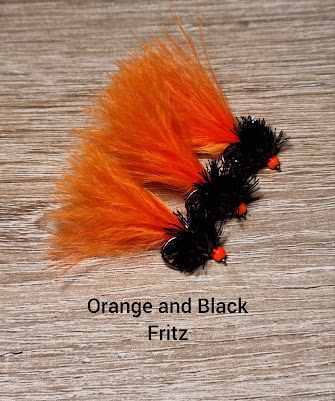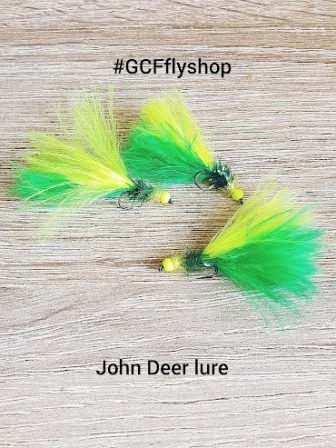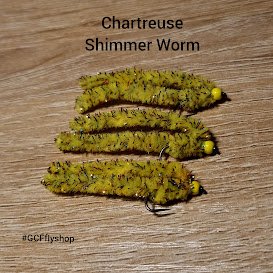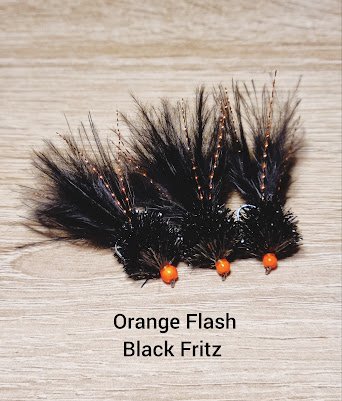Top 10 Lure Fishing Tips for Stillwater Trout
I will start with a fact not a tip fish lures all year round yes they work great in winter but are one of the best trout catching flies throughout the summer months.

Don’t be fooled into thinking there is no skill when it comes to fishing for trout with lures either. There is far more to it than simply casting out and pulling in. Here are ten hints and tips from Dom Garnett and the Flies Online team.
- Tackle up tough
When you’re pulling back big flies for aggressive fish, you don’t need to faff about with ultra-light leaders. In fact, fine lines can run the risk of break-offs when takes are violent. There is little point going below an 8lb tippet. Fluorocarbon is ideal for the job. Quicker sinking than regular mono, it also makes life easier with standard floating fly lines.
- Pack the right rod
What weight fly rod is best for fishing lures? That depends on a few things. Most of all, the size of the flies you use and the conditions are critical. If it’s calm you may get away with as little as a four or five weight. However, for the gold head flies typically used, not to mention tackling any kind of breeze, the best rods for casting lures and streamers tend to be in the six or seven weight range. An eight is sometimes helpful if it’s very blustery.
- Find their level
Are the fish willing to chase in the upper layers, or do you need to get down to them? This is a key question to answer on any Stillwater fishing trip. Try counting down your fly to different depths after casting out. It sounds obvious, but try to keep track and make mental notes as you go. It’s very easy to hook a fish and completely forget the depth you counted to!
- Experiment with colours
There are endless colour variants when it comes to choosing lures, from natural to provocative. Perhaps the best all-around colours are black or white, perhaps with some added contrast in the head or body. Black and green or white and red are classics. Don’t be afraid to go really bright for stocked rainbow trout though: pink, orange and yellow all have their days.




- Ring the changes
Even with stocked fish, a certain fly pattern or colour can quickly go “off” if you show it to the trout a lot of times. So, if the bites dry up try a change. With wilder fish or those that have been caught before, it’s worth switching to more somber colours like black or olive. The safest bet is to keep a healthy selection of flies: I tie any colour you want just contact me with your preferences.
- Get the right retrieve on the day
How quickly do you need to bring in your lures? Keeping them lively is a must, but this doesn’t always mean breakneck speed. Quite often in cold weather, you might find the fish deeper or less willing to lash out, hence you might want to start with a steady figure of eight retrieve also I have had guy’s come up to me saying your retrieve is too slow for this time of year it’s not I get fish on a super slow retrieve in the middle of summer when nothing else is working.
Every session is different though and getting the right retrieve is all about finding out what fish want on the day. If they’re really in the mood to chase, you could even try the so-called roly-poly retrieve I personally don’t like this method but have seen people doing it and each to their own I say and I can achieve the same speed with fast long pulls lol. The roly-poly retrieve is achieved by tucking the rod under one arm and continuously bringing the fly in with both hands, It’s more work but can be brutally exciting, with sudden attacks occurring just under the surface.
- Keep your rod tip low!
Among the most common fly fishing mistakes when fishing lures and streamers are having the rod at the wrong angle. Keep the tip low as you retrieve it as if you were pointing almost directly at the fly. If your rod tip is even just a foot or two above the surface, you will be producing more slack and a less direct connection (below left). You will feel (and hit!) more takes by keeping the tip right down low to the water. Only lifting at the very end of each retrieve to recast.
- Shorten the odds to fool tail nippers
If you regularly get little tugs that don’t develop into a bent rod, the trout might be nipping at the tail rather than fully committing. This is quite a common problem and can be frustrating. If it keeps happening there are two obvious solutions. One is to switch to a smaller mini lure pattern; the other is to trim off a few millimetres of tail material with scissors or your nails!
- Converting follows into takes
Another common frustration when lure fishing is trout that show interest but give up the chase. How do you make these hesitant followers take the fly? Well, your natural instinct might be to slow down as the pursuer closes in; but if anything you are better off speeding up! Remember, you are trying to make the fish react, rather than stop and examine the fly.
- Stay sharp!
It’s important to keep your edge when lure fishing; not only in terms of concentration but quite literally, with a keen hook point! Trout have bony mouths and over time even the best of points will get blunter. The simple answer to this is to carry a hook sharpener and use it to liven up tired flies. If you don’t do this, you’re sure to connect with fewer bites after a while, especially with favourite patterns that have survived more than one outing.
For more tips and to see more of my flies why not join me on my Facebook group GCFflyshop